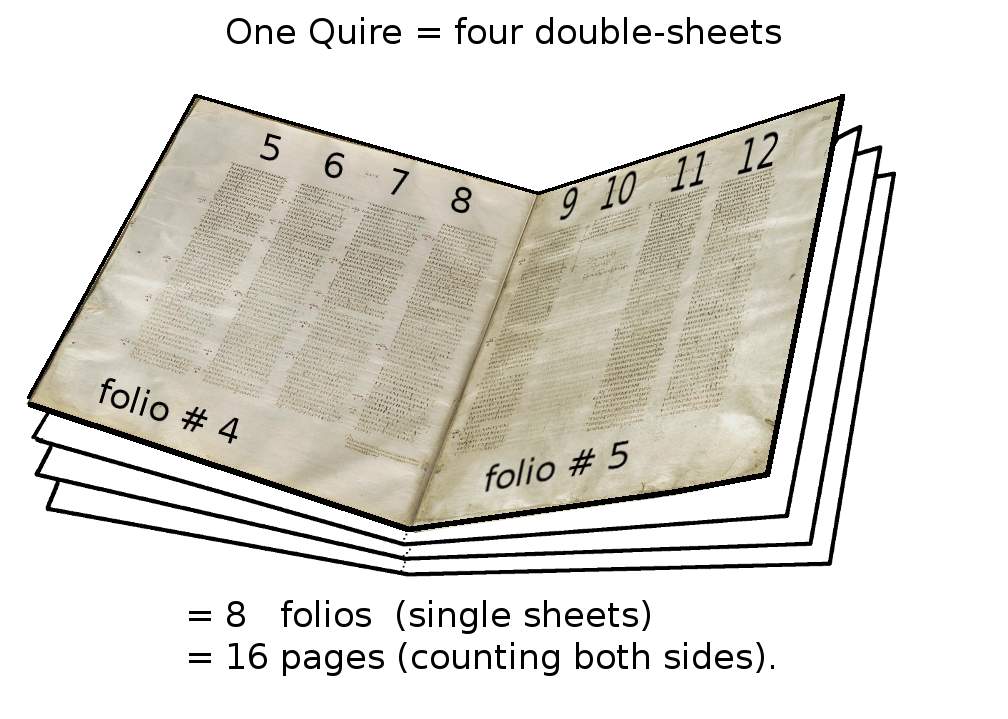Quires:
After the parchment was cut into sheets, it would then be assembled into quires, or bound sets of bifolia (rectangles of parchment folded to produce two "pages"). Quires were generally made in sets of eight leaves or ten leaves, made by either binding sets of bifolia or smaller loose leaves of parchment (Graham and Clemens 14). When arranging the bifolia or leaves to be bound, scribes across Western Europe would generally arrange the sheets "so that, wherever the finished manuscript was opened, like sides would face one another across the opening;" in other words, "hair-side would face hair-side or flesh-side would face flesh-side" (Graham and Clemens 14). It is generally assumed that this practice was for aesthetic purposes; scribes from the British Isles, who used the "Insular" method of parchment preparation, did not distinguish between flesh-side and hair-side when assembling quires, perhaps because the Insular method produced less difference between the two sides of the parchment. Despite this, after the tenth century, the Insular scribes did adopt the continental practice of arranging the sheets so that like sides faced one another.






